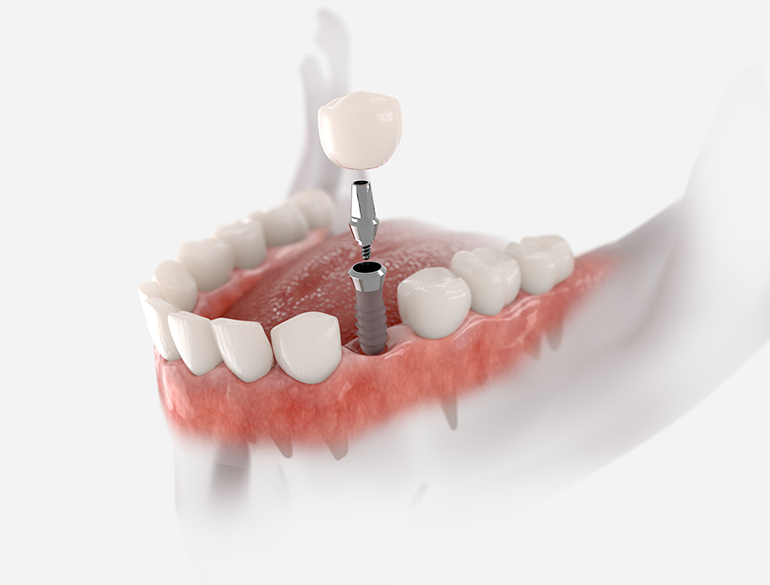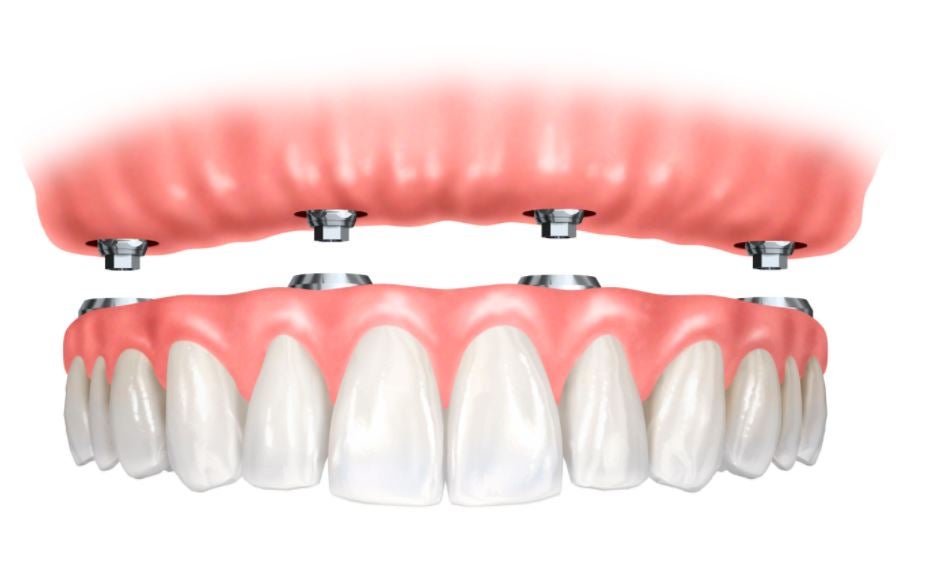The 2-Minute Rule for Dental Sense
The 2-Minute Rule for Dental Sense
Blog Article
Dental Sense - An Overview
Table of ContentsRumored Buzz on Dental SenseSome Known Details About Dental Sense Unknown Facts About Dental SenseWhat Does Dental Sense Do?
are clinical devices operatively implanted right into the jaw to recover a person's ability to chew or their appearance. They offer assistance for fabricated (fake) teeth, such as crowns, bridges, or dentures. When a tooth is shed as a result of injury or illness, a person can experience difficulties such as rapid bone loss, defective speech, or adjustments to eating patterns that cause discomfort.Oral implant systems contain an oral implant body and oral implant abutment and might also consist of an abutment fixation screw. Root canal procedure. The oral implant body is surgically put in the jawbone instead of the tooth's root. The oral implant abutment is usually connected to the dental implant body by the joint fixation screw and expands via periodontals into the mouth to support the connected fabricated teeth
(https://dentalsense1.weebly.com/)Structure of The Dental Implant System selecting oral implants, speak to your oral company regarding the prospective benefits and threats, and whether you are a prospect for the treatment. Points to think about: Your total health is a crucial factor in identifying whether you are an excellent prospect for oral implants, exactly how long it will require to heal, and how much time the implant may stay in place.
Smoking cigarettes might affect the recovery process and decrease the long-term success of the implant. The healing process for the implant body might take several months or longer, throughout which time you commonly have a short-lived abutment instead of the tooth. the dental implant treatment: Thoroughly comply with the dental health instructions offered to you by your dental provider.
Fascination About Dental Sense
Implant failing can cause the requirement for an additional procedure to fix or change the implant system. Brings back the capacity to eat Restores cosmetic look Helps keep the jawbone from shrinking due to bone loss Maintains the wellness of the surrounding bone and gum tissues Assists keep surrounding (neighboring) teeth steady Improves high quality of life Damages to surrounding natural teeth throughout implant positioning Injury to the surrounding tissues throughout surgical procedure, such as sinus opening Injury throughout surgical procedure (as an example, crack of surrounding jawbone) Inadequate function, such as really feeling like the teeth do not bite together normally A feeling that the tooth hangs or twisting in area arising from an abutment screw loosening up Implant body failure (looseness of the implant body) as a result of systemic infection, which may be more probable in patients with unchecked diabetes mellitus due to local infection in bone and gums supporting the implant body due to postponed healing, which might be more probable in individuals that smoke Trouble cleaning up the periodontals around the implant, leading to poor oral hygiene Unattended periodontal disease Post-surgical tingling as a result of nerve impingement or damage Constantly alert health treatment providers and imaging technicians that you have oral implants prior to any type of magnetic resonance imaging (MRI) or x-ray procedures.
FDA is not mindful of any damaging events reported for MRI or x-ray treatments with dental implants. Oral implants systems are generally made from materials that follow worldwide consensus criteria of the International Organization for Standardization (ISO) or ASTM International. These requirements have information of what makes a secure material.

A dental implant is a framework that replaces a missing out on tooth. With screw-like gadgets, the doctor inserts an implant into the jawbone, and it acts as an anchor for a fabricated tooth, called a crown.
The 10-Second Trick For Dental Sense
Some individuals are not qualified website here for oral implant surgical treatment. It is for oral cosmetic surgeons to run on individuals with: acute illnessuncontrollable metabolic diseasebone or soft cells condition or infectionIf these problems are resolved, a person can have the surgical procedure. In, dental specialists avoid running on people with: If individuals with any one of the above undertake dental implant surgical treatment, there is a higher danger of the implant falling short.

Dental dental implant surgical procedure is an individualized procedure. It's not the very same for everybody. However the adhering to gives a general review of what you can anticipate your dental professional, dental doctor, periodontist or prosthodontist to do: Position the implant operatively. Provide you time to recover. Affix the article and last crown, bridge or denture.
Next, your cosmetic surgeon will very carefully put the oral implant into your jaw. If your dental implant is near the front of your mouth, your dental expert will make a short-term tooth for you to wear till you heal.
Dental Sense Can Be Fun For Everyone
Your supplier can tell you what to anticipate in your situation. Throughout the healing phase, your jawbone needs to fuse to the oral implant. This procedure, called osseointegration, is important for security and long-term success. This process can take anywhere from 3 to nine months. Sometimes, it might take longer.
Once your dental implant heals, your dental professional can attach the abutment (tiny connector message) and your final restoration (crown, bridge or denture). This normally takes about one hour to complete and might need a 2nd small surgical treatment. You shouldn't really feel any kind of discomfort during your oral implant procedure because your supplier will certainly utilize drug to numb your gum tissues.
Report this page